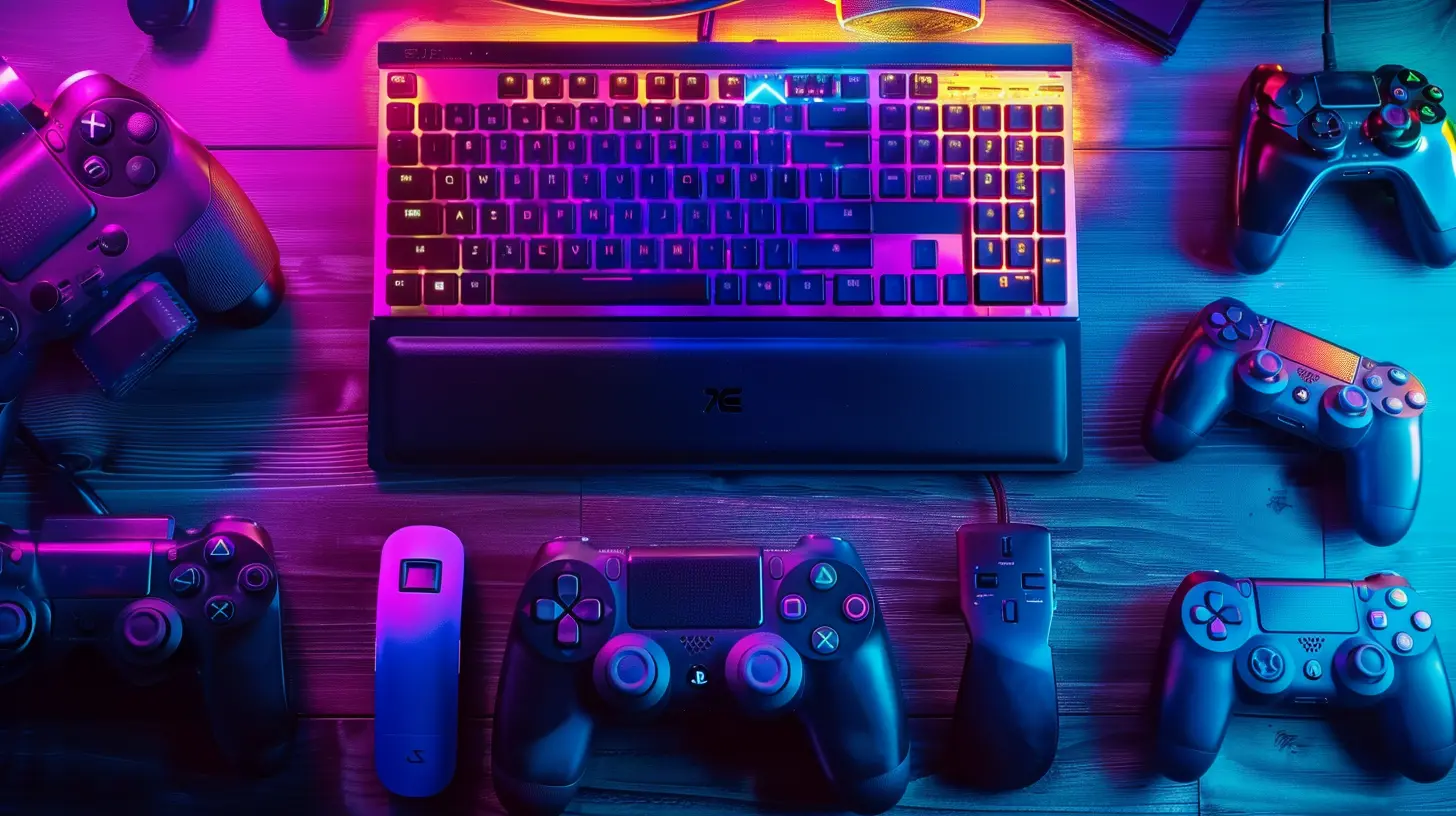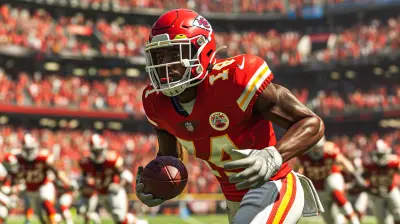How to Use Cashback and Rewards for Gaming Purchases
13 September 2025
Let’s be real for a moment: gaming is more than just a hobby—it’s a lifestyle. Whether you’re a casual console player, a PC master race devotee, or a mobile gamer grinding on your lunch break, one thing’s for sure: keeping up with the latest games, in-game currency, DLCs, and accessories can strain your wallet.
But what if I told you there’s a way to make your gaming purchases work for you? Yep, I’m talking about cashback and rewards. These aren't just buzzwords thrown around by credit card companies and shopping portals—they’re actual tools you can use to save money and even earn while you purchase your favorite games and gear.
In this guide, we’ll break down how to use cashback and rewards for gaming purchases like a pro. So grab your energy drink, sit back in that gaming chair, and let’s level up your buying strategy.
🎮 What Are Cashback and Rewards Programs?
Before we dive deep into tips and tricks, let’s get the basics straight.- Cashback is essentially a percentage of your spending that comes back to you. Think of it like your money boomeranging its way back into your pocket.
- Rewards work similarly, but instead of cold hard cash, you earn points or credits that can be redeemed for things like gift cards, discounts, or even exclusive items.
Now, you might be wondering, "How does this help me in the gaming world?" Well, imagine buying a $60 game and getting $5 back or saving up points that earn you a $50 PlayStation or Steam gift card. Sounds sweet, right?
💸 Why You Should Care About Cashback and Rewards
Let’s put it this way—if you're buying games, gear, or subscriptions anyway, why not get something in return? It’s like getting XP just for logging in.Here’s why it matters:
- Games are expensive: Prices are climbing, especially with deluxe and collector's editions.
- Recurring costs pile up: Think Game Pass, PlayStation Plus, Xbox Live Gold, and those sneaky cosmetic bundles.
- Bonus value: Cashback and rewards lower your net spending, freeing up money for more games (or a decent headset if yours is hanging on by a wire).
Basically, using these programs is like finding a hidden side quest that gives you loot just for participating in the main story.
🛍️ Best Ways Gamers Can Earn Cashback and Rewards
You’ve got options—and lots of them. Let’s cover the main ways you can start racking up points or cashback for your gaming life.1. 💳 Use the Right Credit Card
Tons of credit cards offer cashback or reward points on purchases. The trick is choosing one that aligns with your spending habits.- General cashback cards: These usually give 1%-5% back on every purchase. Simple and effective.
- Store-specific cards: Like the Amazon Prime Rewards card (great for game deals on Amazon) or Target RedCard.
- Rotating category cards: These offer higher cashback in categories that change each quarter. Keep an eye on which include “entertainment” or “digital purchases.”
🧠 Tip: Look for cards that offer extra cashback on digital goods or online shopping. That covers most gaming platforms like Steam, PlayStation Store, and Xbox Marketplace.
2. 🛒 Leverage Cashback Portals
Cashback portals are like the middlemen who pay you for using their links.Popular ones include:
- Rakuten
- TopCashback
- BeFrugal
- Honey (with Droplist and Gold Points combo)
Here’s how it works:
1. Sign up for a portal.
2. Log in and search for your favorite store (Best Buy, GameStop, Green Man Gaming, etc.)
3. Click through their link to the store.
4. Buy as you normally would.
5. Get a percentage of your purchase back.
It’s like getting paid to click a link. Zero effort. Maximum reward.
3. 🎁 Maximize Retailer Loyalty Programs
Some stores know how to treat regulars. If you tend to buy from the same retailers, joining their loyalty program can be a gold mine.Here are gamer-friendly ones to know:
- GameStop PowerUp Rewards: Earn points on every purchase + monthly rewards.
- Best Buy Rewards: Great for console and hardware buyers.
- Target Circle: Occasionally offers game-related deals and you can stack with RedCard for 5% off.
- Microsoft Rewards: Earn points for simply using Bing, taking quizzes, and buying games—it’s surprisingly good.
🧠 Don’t forget platforms like Steam, Epic Games Store, and Humble Bundle often have their own seasonal promos and credit-back systems.
4. 🎮 Stack Rewards and Cashback for Double (or Triple) Dipping
Want to feel like a Finance Final Boss? Let’s talk stacking.Here’s a killer combo:
1. Start with your cashback portal.
2. Use a rewards credit card at checkout.
3. Buy from a store offering its own points.
Example: Buy a game from Best Buy by going through Rakuten, pay with a cashback credit card, and earn My Best Buy points in the process.
Boom—three sources of benefit on one purchase. That’s stacking like a pro. (And no, the game doesn’t glitch.)
5. 🪙 Redeem Rewards as Game Credits, Not Just Cash
Some reward systems let you redeem points specifically for gaming credit, which feels more valuable if you’re already focused on digital purchases.Here’s what you can snag:
- Xbox Gift Cards
- PlayStation Network Cards
- Nintendo eShop Credits
- Steam Wallet Funds
- Amazon Credit (useful for physical and digital games)
Using points for game credit is like turning your everyday expenses into pure gaming gold. You're literally paying for your next game with the groceries you bought last week.
🧾 Real-Life Example: Breaking Down a Reward Strategy
Let’s say you want to buy the newest AAA title for $70.Here's how a savvy gamer would do it:
- Use a cashback portal like Rakuten = 5% back → $3.50
- Pay with a 2% cashback credit card = $1.40
- Buy from GameStop with PowerUp Rewards = ~140 points
- Use points later to get $5 off your next game
So instead of $70, the purchase technically costs you around $60-62 when all rewards and cashback roll in. That’s almost enough savings for some sweet DLC or your next battle pass!
💡 Tips to Supercharge Your Gaming Rewards
Want to go full achievement mode with your cashback? Check this out:- 🗓️ Plan purchases around sales: Combine discounts with cashback for double value.
- 🔔 Use price tracking tools: Honey and CamelCamelCamel help track deals.
- 📲 Download shopping apps: Some give exclusive app-only rewards.
- 💬 Refer friends: Referral bonuses can stack up quickly on reward platforms.
- 🧾 Track your rewards: Apps like MaxRewards or CardPointers help optimize card usage.
🛑 Pitfalls to Avoid
It ain’t all loot boxes and level-ups. Some setbacks can tank your rewards game.- ❌ Overspending: Don’t buy things just to get points. That’s like farming low-level enemies for no XP.
- ❌ Expired cashback: Some programs have usage windows. Cash out before the timer runs out.
- ❌ Ignoring terms: Read the fine print—some portals don't work on preorders or digital goods.
Think of cashback and rewards like potions—they help, but if you chug too many, it might backfire.
🤔 Is It Really Worth It?
Absolutely. While you're not going to retire off cashback and points (unless you're some kind of cashback sorcerer), the savings can really add up.Let’s say you spend $1,000 a year on gaming (including consoles, subscriptions, and DLCs). A 5% average return puts $50 back in your budget—that’s a full-priced new title or two indie gems. And if you stack bonuses and seasonal promos? That number could easily double.
Would you walk past a $100 bill on the sidewalk? Didn’t think so. So why ignore easy money every time you press “buy now”?
👾 Final Thoughts: Make Your Wallet Game-Over-Proof
Gaming is supposed to be fun, not financially frustrating. So why not make smarter plays with your money? Using cashback and rewards isn’t just smart—it’s a game in itself. One where the final boss is full price, and your power-ups are discounts and dollars back.Next time you’re eyeing that shiny Collector’s Edition or loading up on V-Bucks, remember—you’ve got options. Turn every purchase into a mini win. Your bank account (and your backlog) will thank you.
Happy gaming—and happy earning!
all images in this post were generated using AI tools
Category:
Gaming DealsAuthor:

Leandro Banks
Discussion
rate this article
1 comments
Nico Lamb
Great article! Using cashback and rewards for gaming purchases can really enhance the experience and save money. I appreciate the tips on maximizing benefits—definitely will implement these strategies!
September 14, 2025 at 3:21 AM

Leandro Banks
Thank you! I'm glad you found the tips helpful. Happy gaming!


